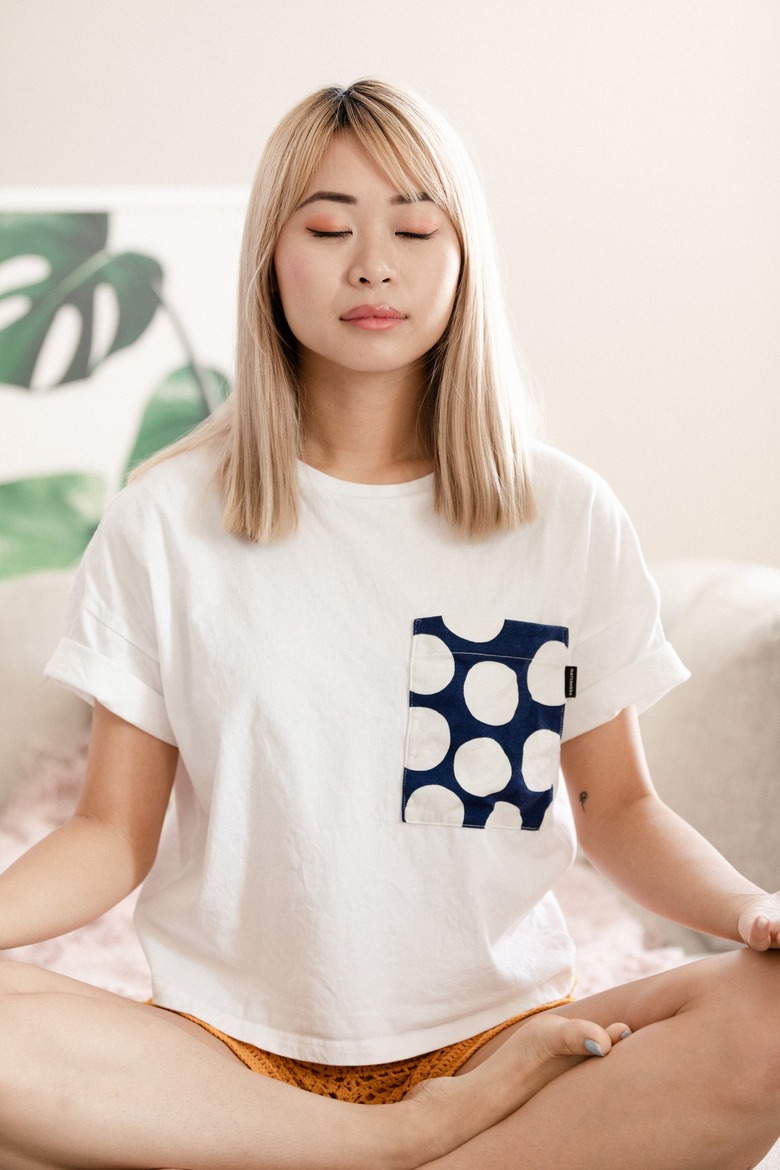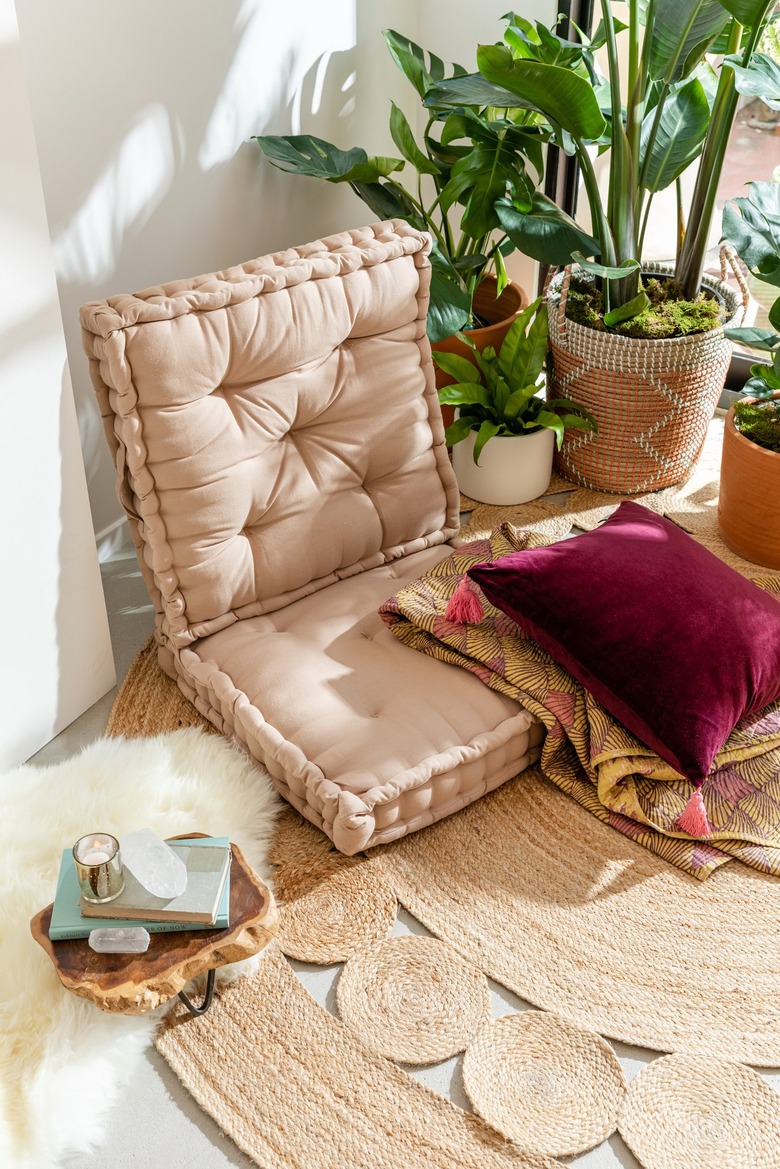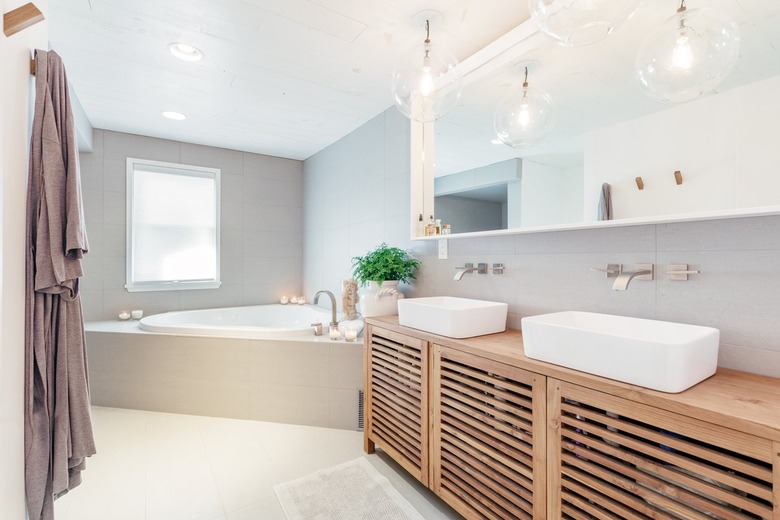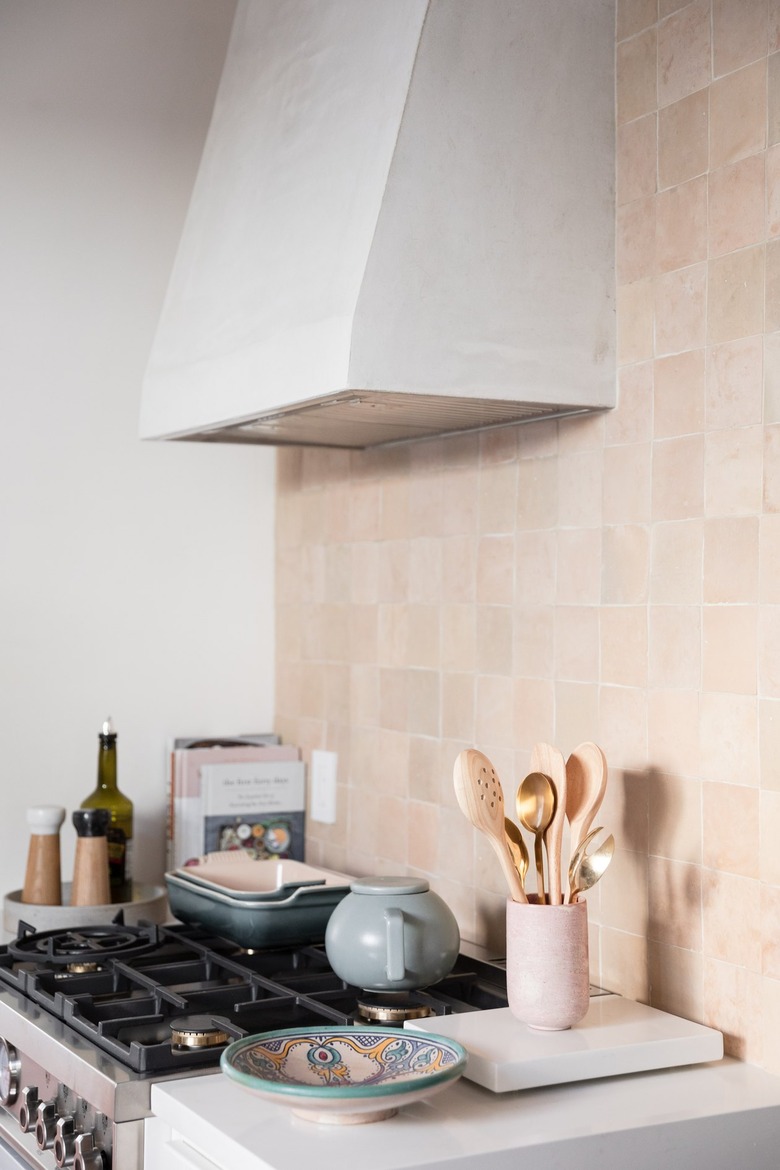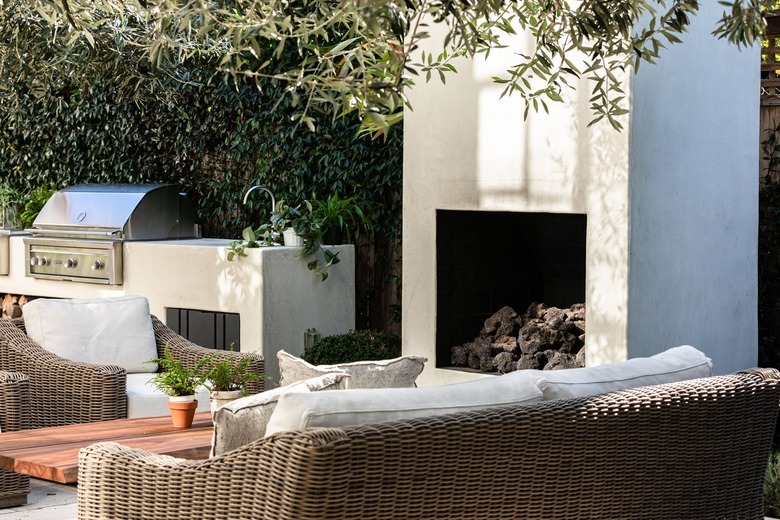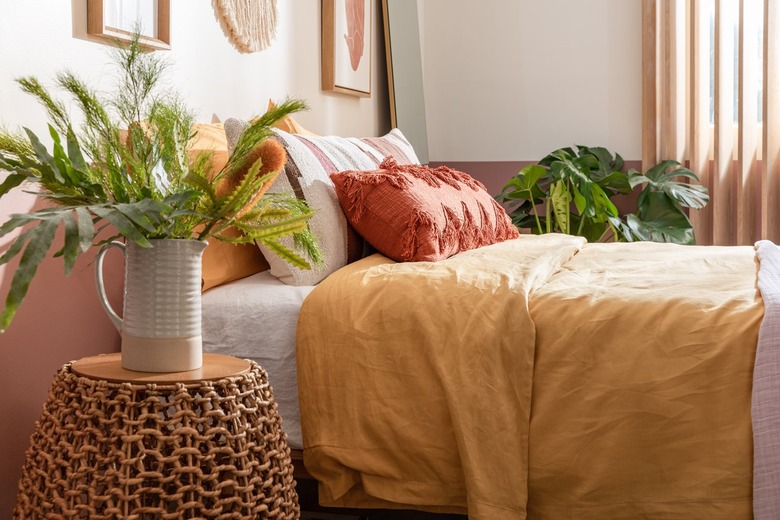The 8 Most Significant Healthy Home Trends Of 2021
Take a moment to look around your home, sweet home. Do you notice elements that have changed over this past year? For many, the answer is a resounding yes now that we've been relying on our homes for every aspect of our daily routines. From working out to simply working, our homes became the sole setting of our lives in 2020 and that's continuing into 2021. As a result, we've had to transform them into spaces that are more functional for both our health and happiness.
In honor of Hunker's Healthy Home week, we wanted to get the full picture of exactly how our residences have changed to fit our new-normal lifestyles. To do so, we reached out to various experts in the home and lifestyle fields to get their takes on what it currently means to have a healthy home.
1. At-Home Mental Health Services and Peace of Mind
1. At-Home Mental Health Services and Peace of Mind
"Headspace just conducted a survey commissioned by Headspace for Work that found employees are more stressed and burned out by work today than they were at the start of the pandemic, and they're increasingly looking to employers for mental health benefits and solutions," Dr. Clare Purvis, senior director of behavior science at Headspace, an app specializing in meditation, tells Hunker.
(Images: Stephen Paul for Hunker)
Headspace found that two-thirds of employees are currently utilizing mental health services provided by employers. From May 2020 to May 2021, this represents an 8.5% increase. That would also explain why Headspace for Work experienced over 500% growth in inbound requests from employers looking to support their workforce's mental health.
On the non-corporate side of things, over the past 12 months, Headspace has seen app downloads going up by 20%, with two times more users starting an at-home workout targeted at reframing anxiety, and a 6% increase in users seeking out the "stressed meditation." Regarding sleep, there was a 33% increase in people using sleep music to help them hit the hay.
With these numbers in mind, Dr. Purvis says, "People are demanding mental health care and are more open to discussing mental health issues they are facing at both the individual and corporate level ... We see that along with flexibility and work-from-home options, people now rank mental health benefits among their top three perks when considering a new job."
On the topic of workplace benefits, Kate Spies — the senior vice president and general manager at Well+Good — tells Hunker that in 2020, 46% of U.S. patients used teletherapy to replace in-person appointments. "It speaks to the fact that the last year has been tough on people's mental health and teletherapy is an amazing way to help with that at home while not having to worry about a commute," says Spies. In addition, 76% of people told McKinsey & Company that in the future, they'd be interested in taking advantage of digital health services.
"We see that along with flexibility and work-from-home options, people now rank mental health benefits among their top three perks when considering a new job." — Dr. Clare Purvis
Many also seem to be looking for peace of mind when it comes to their security and safety. "As the world shut down last year and people spent more time at home than ever before, we saw sales for home security surge — at some points, SimpliSafe sales were up more than 60% year over year," Amy Nagy — director of communications at SimpliSafe, a home security company — tells Hunker. "As home took on an evermore important role, we saw that people increasingly wanted to make home feel like a safe haven, which again, drove interest in home security."
2. Air Purification and Cleaner Homes
2. Air Purification and Cleaner Homes
"People are thinking through how to make their home functionally work for them. Like sophisticated air filtration and purifier systems — we're seeing a huge boom in that part of the market," Spies says. "A lot of that technology is getting far more accessible."
The Dyson Global Dust Study confirms this. "63% of Americans increased the frequency of cleaning their homes as a result of the pandemic," Michael Leat, a Dyson design engineer, tells Hunker. "We also found that 50% of Americans use an air purifier in their homes every day." This correlates to the fact that, according to Leat, the search term "air purifiers" increased 100% in 2020 on Google.
"Every day, humans breathe up to 9,000 liters of air," Leat says. "As we're spending so much time indoors, individuals are recognizing that the quality of the air we breathe in all aspects of our routine is non-negotiable."
During lockdown, Dyson's purifiers indicated that there was an overall increase in PM2.5 (fine inhalable particles). "This was likely caused by people spending more time inside, cooking and disturbing household dust," Leat explains. Plus, because of an increase in home renovations during the pandemic, the colorless gas pollutant formaldehyde has become a concern. "New furniture, wooden products such as plywood and fiberboard, insulating materials, and DIY products such as paint, wallpapers, and varnishes can emit formaldehyde," Leat states, adding that Dyson's latest Purifier Formaldehyde range was specifically designed as a result of Dyson's pandemic findings.
3. Spa Bathrooms
3. Spa Bathrooms
"People want to have those shower sprayers and double heads. It's about creating that spa feel," interior designer Marie Burgos tells Hunker. "For families with kids, it's about having separate bathrooms and the double vanity is a big one — it's those areas where families can really find a way to live together in their home."
The National Kitchen & Bath Association (NKBA) reports that following the lockdowns of 2020, homeowners have wanted to refresh their primary bathrooms. "Bathrooms have become a respite in the home where family members can go to wind down from stress and get away from others," Tricia Zach, NKBA's head of research, tells Hunker. "Many homeowners are incorporating spa-like elements into their bathroom designs to create a place to promote wellness."
(Image: Courtesy of Tony Puerzer)
According to NKBA's Living Impacts Design research, 74% of participants believe a bathroom that minimizes clutter and makes surfaces easier to clean will be a noteworthy theme in the future. Regarding a location that provides an escape from stress, 69% feel that this is what the bathroom will become and 58% think this space will be a place where one can heal the body. In terms of accessibility, 65% of respondents anticipate having a long-term bathroom that they can use no matter what their age is.
Over at Lowe's, the company has seen above-average sales in the bathroom department. "Oversized soaking tubs, brass hardware, frameless shower doors, and spa baths have been some bathroom trends we've seen over the past year," Caroline Harmon, Lowe's trend strategist, tells Hunker. "Incorporating elements that promote wellness and contribute to mental, physical, and emotional well-being has taken center stage this year."
Specifically, Harmon reports an increase in chromatherapy (or color therapy), aromatherapy, rain showerheads, and Bluetooth showerheads. Natural elements like stone, wood, and greenery have also stood out as 2020-2021 bathroom trends.
4. Healthier Home Dining
4. Healthier Home Dining
"I think we all rediscovered the joy of pantry staples," Spies says. "In wellness and healthy eating, for a really long time, the idea was that it had to be fancy, new, and cool, and it had to be a superfood. We were all reminded through the pandemic that there's so much you can do with cans of beans, great flour, great pasta, and other shelf-stable ingredients."
When it comes to convenient services that assist with preparing our dishes, meal kit companies noticed a shift. "HelloFresh experienced a record-breaking year as consumers cooked at home, with revenue more than doubling for the fiscal year 2020 in the U.S. (up 102.3% year over year)," a HelloFresh spokesperson tells Hunker. "We delivered more than 600 million meals to customers across 14 markets."
Chef Dana Murrell, HelloFresh's head of culinary, also saw a rise in meal kits that are curated to fit certain diets. "As keto, paleo, and plant-based diets continue to grow in popularity, meal kits are catering to those needs no matter your budget, dietary restrictions, or health goals," she says, adding that trying international flavors and receiving help with holiday meals have been other notable trends amongst meal kit consumers.
"I think we all rediscovered the joy of pantry staples. In wellness and healthy eating, for a really long time, the idea was that it had to be fancy, new, and cool, and it had to be a superfood. We were all reminded through the pandemic that there's so much you can do with cans of beans, great flour, great pasta, and other shelf-stable ingredients." — Kate Spies
In addition to more people cooking at home — Arati Menon, the editorial lead at Home52, tells Hunker that Food52's recipe traffic grew 34% year over year — there have also been advances in at-home beverage making. "I think that a lot more people are experimenting with making their own coffee at home," Spies says. "Throughout the pandemic, there were times when people couldn't go to their local coffee shop and they invested in being able to make cafe-worthy coffee at home."
"Since most of us were working from home, we were likely (I was!) drinking more home-brewed coffee made with coffee grinders, pour-overs, espresso machines, and cold brewers," adds Menon.
5. Kitchens As the Heart of the Home
5. Kitchens As the Heart of the Home
"Consumers want kitchens that promote interaction," says Zach of NKBA. "An open space with room for all to gather, yet one that feels cozy and calming. Kitchens will need to work for various types of cooks: those who feel time-crunched and have little time for meal prep, those who love to experiment with recipes, and those who are health-conscious with the desire to eat more fresh foods. The need for seamless digital interaction is a given for many."
NKBA's Living Impacts Design survey found that 82% of participants see an open layout as being the future of kitchen design. 80% of people want the kitchen to be a place where clutter and cleaning are minimized, and 75% believe this area of the home will become synonymous with entertaining.
(Images: Ana Stanciu for Hunker and Stephen Paul for Hunker)
One can also see a significant emphasis on kitchen upgrades based on the fact that Food52 doubled its 2019 revenue in 2020. "At the start of the pandemic, we saw a tidal wave of interest in bread baking — so no surprise that tools to help with baking (from standing mixers to Dutch ovens and dough hooks) enjoyed a fillip in sales and generally gave us great comfort," Menon explains. "In general, our pandemic purchases were largely centered around making our lives at home more bearable (at the least) and enjoyable and creative (at best)."
As the pandemic continued, Menon mentions that Home52 and Food52 noticed people coping with cooking fatigue and desiring convenience. In addition to dutch ovens, multi-use braisers and sheet pans became popular for one-pot and easy-to-clean dinners. "We were meal-prepping, batch-cooking, and freezing more — so storage containers became our best friends," Menon says.
6. Making Time for At-Home Fitness
6. Making Time for At-Home Fitness
"80% of professionals say that fitness activities have been key to building new work-from-home routines, and one in five professionals are using their previous commute time to exercise," Mandy Menaker, global head of PR at ClassPass, tells Hunker.
Menaker states that the top digital workouts of 2020 were yoga, high-intensity interval training (HIIT), pilates, barre, dance, stretching, and boxing. In addition to stretching, meditation was another restorative fitness activity that was highly in demand.
As for more unexpected fitness trends, ClassPass reported that for the first time ever, 12 p.m. was the most sought-after workout time during the week — no matter the time zone. In particular, lunchtime workouts have increased by 67%. "This shift can largely be attributed to a rise in remote work, and the ease of no-shower-required virtual meetings," Menaker explains, adding that members have also been enjoying classes taught in other cities across the globe. "25% of professionals are exercising more now than at the start of COVID-19."
Spies adds that the diversity of home gym equipment has experienced an upswing this past year. "It's not your mother's old spin bike anymore and it's probably not even just a Peloton either," she states. "There's Mirror, Tonal, and so many different kinds of hand weights and bands. You really can set up a whole gym in a very small space and reduce the need to go to the gym."
"This shift can largely be attributed to a rise in remote work, and the ease of no-shower-required virtual meetings." — Mandy Menaker
When designing interiors, Burgos has specifically noticed many people requesting a workout area. Both the Mirror and Peloton have been stand-out pieces of equipment amongst her clientele.
7. Outdoor Spaces Are a Wellness Priority
7. Outdoor Spaces Are a Wellness Priority
"After more than a year of lockdown, so many of my clients have discovered that a healthier, happier home lies in taking full advantage of their outdoor spaces," Fernando Wong — founder of Palm Beach and Miami-based Fernando Wong Outdoor Living Design and star of Discovery+ Clipped with Martha Stewart — tells Hunker. "Multiple studies show the mental health benefits of sunshine, fresh air, and working in gardens. According to AARP, working in the garden increases exposure to vitamin D, decreases the chances of dementia, helps elevate your mood, promotes low-impact aerobic exercise, and combats loneliness."
(Image: Stephen Paul for Hunker)
Burgos has actually seen many clients relocating so they can live in homes or apartments with outdoor spaces. After this move, they have reported feeling a greater sense of freedom. "There's a lot of greenery, landscaping, and having outdoor dining has been a big one," Burgos says, describing what she's noticed in these spaces.
Wong has especially seen an increase in colorful textiles — rugs, pillows, and table linens — being paired with contemporary furniture and traditional patterns and finishes. The same goes for a separation of exterior areas. "Breaking up outdoor spaces counterintuitively makes the space feel larger and also allows people to establish different areas for yoga and meditation, entertaining, cooking, and for kids to play," Wong explains.
"Multiple studies show the mental health benefits of sunshine, fresh air and working in gardens. According to AARP, working in the garden increases exposure to vitamin D, decreases the chances of dementia, helps elevate your mood, promotes low-impact aerobic exercise, and combats loneliness." — Fernando Wong
Outdoor workspaces, otherwise known as WFO, have also begun seeing the light of day (literally). "With remote working here to stay, creating areas that are well-shaded and protected (as much as possible) from noise and the elements are perfect for those looking for inspiration and fresh air throughout the day." says Wong, adding that he tends to use hedges, vines, and flowers to accomplish this sense of privacy. Native plants and trees that require less water and fertilizer are favored amongst his clients, since they also tend to grow faster and help support local wildlife.
One of the most in-demand DIY projects Lowe's noticed last year was customers turning backyards, balconies, and patios into areas where they can escape from being locked down inside. "For some customers, that meant projects like building a firepit, starting a garden, expanding a deck, or building a pergola," Harmon reveals. "For others, it meant maximizing space, turning to compact and flexible patio and grill options that are easy to store when not in use."
8. An Interior Connection to Nature
8. An Interior Connection to Nature
For those who are unable to have an outdoor spot, an interior connection to nature has become essential. "Over the past year, I've noticed a huge trend in plants being used in interior design along with water features," interior designer Justin Q. Williams of TradeMark Design Co. tells Hunker. "This trend has been well received and greatly appreciated by those who typically travel for work and have a love for plants, yet didn't have the time to care for them."
"There are myriad studies that show that nature has a huge healing power that is important for longevity, mental health, connectedness, and mindfulness," Spies says. "There are studies that show that even the color green is very calming just because of its ties to nature."
Natural light has played a special part in this. "A lot of daylight is being brought into spaces, a lot of bright colors and things to uplift," architect Tiffany Brown, the national executive director of the National Organization of Minority Architects, tells Hunker. And this trend isn't only popular in homes — Brown reports seeing office buildings and schools utilizing more natural light.
This desire for sunlight has also translated into the technology people are adopting. "Light therapy is becoming more accessible," Spies says. "Offices were designed fairly particularly to mimic certain light patterns to help with the natural flow of circadian rhythms. That's not necessarily the case in people's homes." That would explain why many brands are creating smart products that mimic the sun's natural rays, so people can get that energy-boosting light no matter what the season is.
(Image: Stephen Paul for Hunker)
In addition to using the environment as part of how we decorate our indoor spaces, people are also working to protect Mother Nature by embracing sustainability. "A recent survey from HelloFresh found that 29% of respondents noted that they are more aware of how much food they waste," says Murrell.
Home52 has noticed the same trend. In particular, Menon mentions that consumers are more interested in purchasing "naked" produce (aka produce that isn't wrapped in plastic), bulk buying, batch cooking, reusing leftovers, and investing in low-waste cleaning. "These larger lessons will likely factor into how we design and renovate our spaces as well," she says. "This can include prioritizing reclaimed materials, picking energy-saving appliances, and opting for smaller, eco-friendly upgrades."
Our definitions of home and health are ever-evolving and this past year has made that crystal clear. It will be interesting to see which trends and lessons we carry with us as we return to "normal life" following the eventual end of the pandemic. As we've learned, there is always more to learn and experience while we aim to adapt with the times. Yet, one thing is for sure: Our homes will always be microcosms of our world, both personally and globally.

